Posted 2019/9/23
The relationship between input capacitance and stable operation is explained in terms of a current amplifier with a configuration in which current is feedback to the operational amplifier via a resistor (Fig. 4). The equivalent circuit of the input section of this current amplifier is shown in Figure 4.
Figure 4: Feedback-type current amplifier using operational amplifier
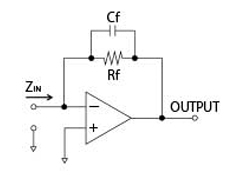
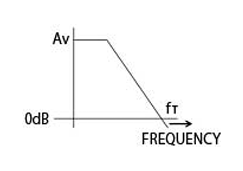
Open-loop gain of op amp Gain frequency characteristic
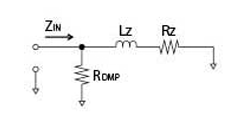
Input-section equivalent circuit
If the open-loop gain at DC of the op-amp is Av and the unity gain frequency is f, the constants of the input equivalent circuit are given as follows.
Lz=Rf/(2・π・fт) (H)
Rz=Rf/(1+Av) (Ω)
RDMP=1/(2・π・fт・Cf) (Ω)
Cf is equivalent to damping resistance
In Fig.5, Cs is added in equivalent circuit as capacitance between input to GND. Cs is such as output capacitance of the sensor and the capacitance of the cable from the signal source. As shown in Fig. 5, the equivalent circuit with Cs is a parallel resonant circuit, so operation may be unstable.
Figure 5: Input equivalent circuit with Cs (parallel resonance)

In the input-section equivalent circuit in Fig. 5, RDMP (acting as a damping resistor) depends on Cf; therefore, to obtain stability, Cf (corresponding to Cs) is required. Fig.6 shows the gain frequency characteristic when frequency response optimized against Cs (10 pF) is shown in Figure 6. The feedback resistance and signal-source resistance are both 1 GΩ. When Cs is 100 pF, the gain rises slightly near the upper cutoff frequency. And when Cs reaches 1000 pF, the gain rises large and a peak occurs.
Figure 6: Example of gain frequency characteristics when Cs is
added
(optimal adjustment when Rs = Rf = 1 GΩ and Cs = 10 pF)
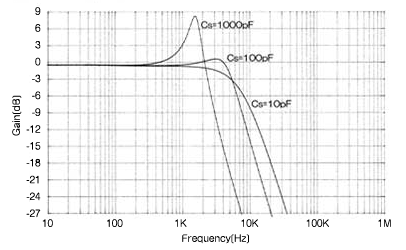
In above, it was shown that in order to increase the upper cutoff frequency, it is necessary to reduce Cf; however, when capacitance Cs is added to the input, to obtain stability, it is necessary to increase Cf. These is a trade-off between stability improvement and upper cutoff frequency (bandwidth).
NF's SA-600/CA-550/CA-650 series is configured so that resonance does not occur even if Cs is applied to the input due to its circuit design. Thanks to this configuration, instability due to Cs can be avoided, without large Cf, and wide bandwidth and stable operation are achieved. The gain frequency characteristic of SA-606F2 is shown in Figure 7. Even if Cs is 10 pF, 100 pF, and 1000 pF, it is clear that frequency response is stable.
Typical capacitances of cables and photodiodes equivalent to Cs are listed in Table 4.
Figure 7: Gain-frequency characteristics of SA-606F2
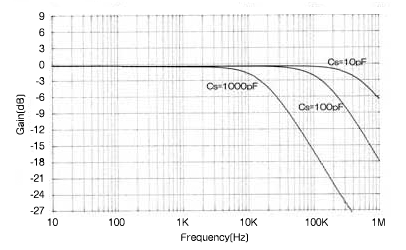
Table 4: Capacitances of cables and photodiodes
| Product name | Parallel capacitance |
|---|---|
| 50-Ω BNC cable | About 100 pF/m |
| 75-Ω BNC cable | About 67 pF/m |
| Photodiode (small type) | A few pF to 100 pF |
| Photodiode (large type) | About 100 pF to 1000 pF |
Related keywords : Ultra low noise amplifier, LNA